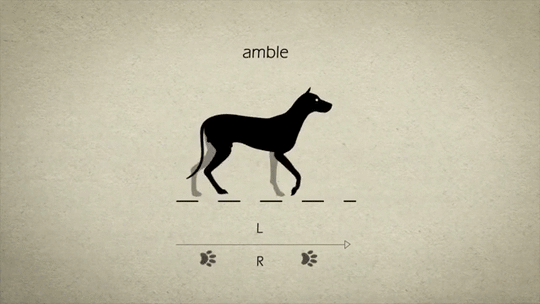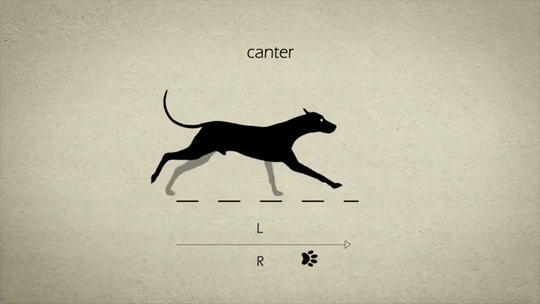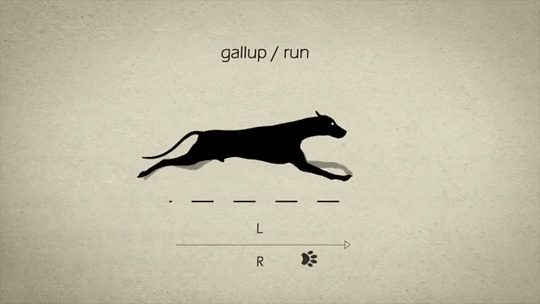Mrvmt - Math Enthusiast








More Posts from Mrvmt and Others
Verkligen en vacker skapelse!

Golden rectangle
Welcome to my world of dyslexia... :)
When I'm halfway through a sentence and suddenly realise there is no way out of the grammatical crater I have dug myself

Back when I was in school, this concept was really hard for me to grasp my head around, and I must say, this was a compelling way to understand the function of multiplying with negative numbers!
Thanks!

By virtue of everyday usage, the fact that (-1) x (-1) = 1 has been engraved onto our heads. But, only recently did I actually sit down to explore why, in general negative times negative yields a positive number !
Intuition.
Let’s play a game called “continue the pattern”. You would be surprised, how intuitive the results are:
2 x 3 = 6
2 x 2 = 4
2 x 1 = 2
2 x 0 = 0
2 x (-1) = ?? (Answer : -2 )
2 x (-2 ) = ?? (Answer : -4 )
2 x ( -3) = ?? (Answer : -6 )
The number on the right-hand side keeps decreasing by 2 !
Therefore positive x negative = negative.
2 x -3 = -6
1 x -3 = -3
0 x -3 = 0
-1 x -3 = ?? (Answer : 3)
-2 x -3 = ?? (Answer : 6)
The number on the right-hand side keeps increasing by 3.
Therefore negative x negative = positive.
Pretty Awesome, right? But, let’s up the ante and compliment our intuition.
The Number Line Approach.
Imagine a number line on which you walk. Multiplying x*y is taking x steps, each of size y.

Negative steps require you to face the negative end of the line before you start walking and negative step sizes are backward (i.e., heel first) steps.

So, -x*-y means to stand on zero, face in the negative direction, and then take x backward steps, each of size y.

Ergo, -1 x -1 means to stand on 0, face in the negative direction, and then take 1 backward step. This lands us smack right on +1 !
The Complex Numbers Approach.
The “i” in a complex number is an Instruction! An instruction to turn 90 degrees in the counterclockwise direction. Then i * i would be an instruction to turn 180 degrees. ( i x i = -1 ). where i = √-1

Similarly ( -1 ) x i x i = (- 1 ) x ( -1 )= 1. A complete revolution renders you back to +1.
We can snug in conveniently with the knowledge of complex numbers. But, complex numbers were established only in the 16th century and the fact that negative time negative yields a positive number was well established before that.
Concluding remarks.
Hope you enjoyed the post and Pardon me if you found this to be rudimentary for your taste. This post was inspired by Joseph H. Silverman’s Book - A friendly Introduction to Number Theory. If you are passionate about numbers or math, in general it is a must read.
There are several other arithmetic methods that prove the same, if you are interested feel free to explore.
Have a Good Day!
PC: mathisfun







Animal Gaits for Animators by Stephen Cunnane
Även efter man läst förklaringen och verkligen försöker bortse skuggans illusion, så stuttsar denna boll...
Skulle det fungera om man tog bort perspektiv rutorna? Så du inte har djupet att förhålla sig till?... Hmm

Shadow illusion
The human brain uses shadows to interpret how objects move. By faking the shadow, one can fake the perceived motion of an object. The red circle moves along a line.
Interactive version:
http://www.malinc.se/m/ModellingIllusions.php

So I just finished my CALC 2 class with the highest marks in the class and I wanted to put together a “guide” on how to study for calculus. It doesn’t matter if you are taking AP Calculus or Calculus in college, this guide should be a general overview but I will mention some specifics to AP Calc. *Picture from my Calculus lecture.
General Tips
Buy the AP CALC review books. Regardless of whether you are in college calculus or actually in AP Calculus, the review books are great in condensing materials and having good examples.
Create your own cheat sheet. Every time you learn a new formula or theorem, write it down in a cheat sheet. This forces you to recall the information constantly.
Know your common derivatives and common integrals like the back of your hand.
Fundamental Theorem of Calculus, Part I & II? Yeah, it’s fundamental. Need to know that.
Common limits? Yep, that too.
Know your pre-calc and algebra by heart. The hardest thing about calculus is not the formulas and theorems, but recalling past materials to solve a problem. If you could easily recognize trigonometric identities, you would be well set for the class.
Know what trig graphs look like and what they approach, etc.
Learn how to do the math without a calculator. Some professors don’t let you use calculators on the tests and when you are become too dependent on the calculator, you tend to forget how to do simple addition/subtraction and multiplication/division. Also, there is a non-calculator portion to the AP Calculus Exam, so don’t make your calculator your crutch.
Practice every day + do your homework. A little practice everyday goes a long way and doing your homework (even if it doesn’t count as a grade) can be a drastic way of improving your grades because chances are, your teacher knows you probably aren’t going to do the homework and will have test questions very similar to the homework questions.
Show all your work. Write all the steps out. If you make a mistake mentally, your whole answer will be wrong. To decrease the chances of loosing points for careless errors, label everything, even if it tedious. Also, work shown can count towards partial credit on tests.
Practice the problems from your textbook + problems outside your textbook.
Understand and review old tests. When you get your tests back, redo the whole test on another sheet of paper. Try to understand where you went wrong. Was it a simple math calculation error? Did you do the derivative wrong? Was the theorem wrong? Did you forget a step like checking for conditions to apply L’hopitals Rule or Alternating Series Test for Convergence? Whatever it is, go through the entire test (yes, even the ones you got right) and re-do it.
Ask for help when you don’t understand something. Solving tough calculus problems are easier when working with a group on a white board because you get a fresh set of eyes and a new mindset/approach to a problem. If you cannot tackle a problem, regardless of how many ways you have tried, it’s best to ask someone who already knows how to do it.
Resources for AP CALC
Buy review books. Honestly, this is self-explanatory. I usually would go with a Barron review book, but hey, what ever works with you.
Do the previously released AP Calc exams. If you are a BC student, do the release exams for both AB and BC for more practice.
Previously released AB Exams
Previously released BC Exams
Step-by-step explanations for free response questions release
AB Study Guide
Cheat Sheets + Other Resources
I advise you to print out the cheat sheets and place it in the front of your calculus binder/notebook or where it can be easily accessed.
Cheat Sheets
AP Calculus Stuff You Must Know Cold
This 2-page cheat sheet is honestly god gifted and I advise you to print it out and laminate or something and put it in the front of your calc binder/notes. Will definitely save your life.
Algebra Cheat Sheet
Trigonometric Cheat Sheet
Calculus Cheat Sheet
Derivatives and Limits
Integrals
Online Tutorials + Videos
Khan Academy
Differential Calculus
Integral Calculus
Paul’s Online Math Notes
HippoCampus
Online Calculators
Symbolab’s Calculus Calculator
The most beautiful thing to ever exist when you are checking your answers or looking for the steps on how to do a problem.
Don’t rely on it too much. Actually learn how to do it.
Wolfram Alpha
Implicit Differentiation Calculator
Desmos Online Graphing Calculator
Bet you don’t know how to graph an x-function on that TI-84 without solving it out for y. But it’s cool, neither do I. That’s why I rely on Desmos’ Online Graphing Calculator.
Beautiful!








Double Arm
This sketch was made by rotating point 1 around a circle, rotating point 2 around point 1, and then joining a line between point 1 and point 2. In the gif point 2 is traveling in the same direction as point 1. Point 1 is traveling at 1x, and point 2 is traveling at 2x. Following the gif are some of my favorite combinations of the periods:
Rotating same direction:
1x and 1x
1x and 2x
1x and 5x
2x and 1x
2x and 5x
5x and 8x
The last image is an array of all the varieties from 1x to 9x for each point.
code: http://p5js.sketchpad.cc/sp/pad/view/jLceHatXid/latest






Regolo’s Square Fractal
Inspiration: http://regolo54.tumblr.com/post/150627614707/fractal
Code as is.
Interactive code. Up/down/left/right mouse controls the size and placement of the squares. Up/Down arrows control how many squares are in each ring. Any other key will save the frame as a picture!
Down the rabbithole. :)
/|\ / \ hello it is I, twocubes
Like your piece. With flowers and everything! :)
http://autolyses.tumblr.com/tagged/autou
some photos I’ve taken or things I’ve made, just for fun
-
 scentwitchtheorist liked this · 2 months ago
scentwitchtheorist liked this · 2 months ago -
 alteregodepega liked this · 7 months ago
alteregodepega liked this · 7 months ago -
 intoallkindsofincest liked this · 1 year ago
intoallkindsofincest liked this · 1 year ago -
 kharlhohs77 liked this · 1 year ago
kharlhohs77 liked this · 1 year ago -
 teathamgsm liked this · 1 year ago
teathamgsm liked this · 1 year ago -
 dinobxt liked this · 1 year ago
dinobxt liked this · 1 year ago -
 evsanlitussau liked this · 1 year ago
evsanlitussau liked this · 1 year ago -
 margarita-cansino liked this · 1 year ago
margarita-cansino liked this · 1 year ago -
 krinsbez reblogged this · 2 years ago
krinsbez reblogged this · 2 years ago -
 krinsbez liked this · 2 years ago
krinsbez liked this · 2 years ago -
 monosakarido reblogged this · 2 years ago
monosakarido reblogged this · 2 years ago -
 dakitutambien reblogged this · 2 years ago
dakitutambien reblogged this · 2 years ago